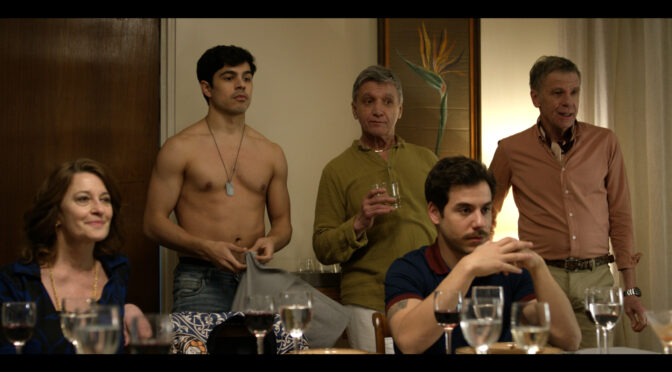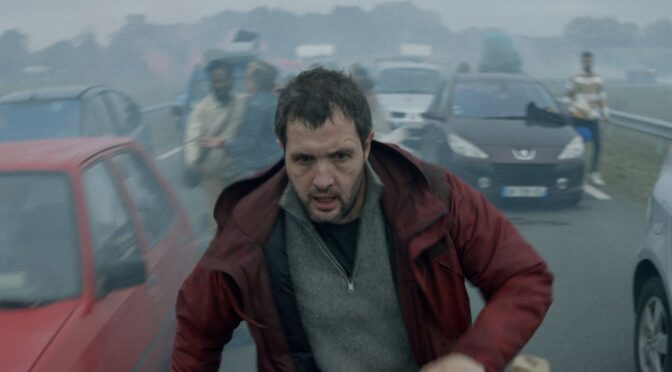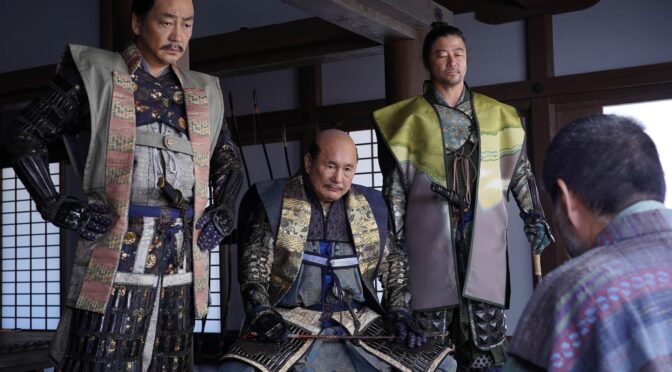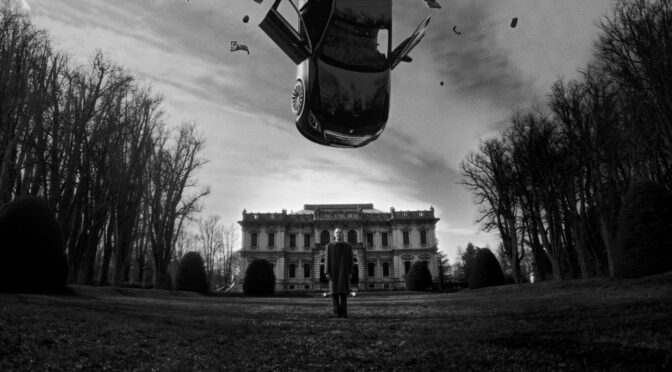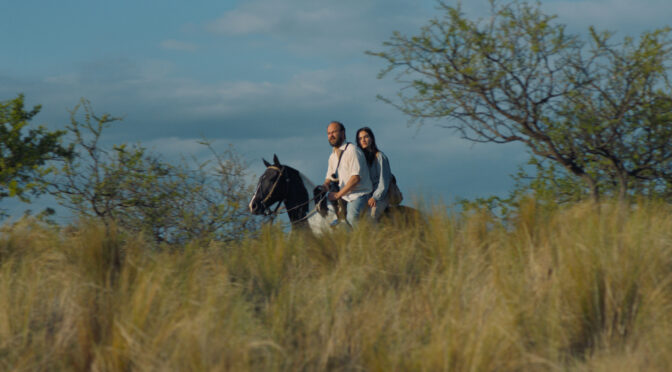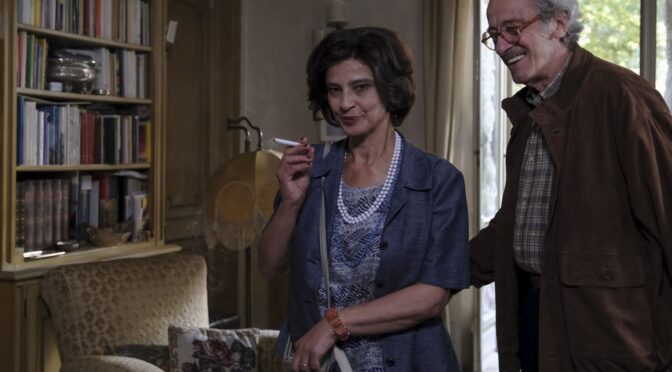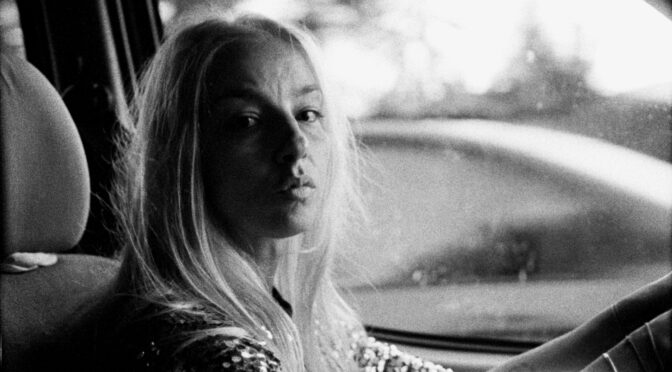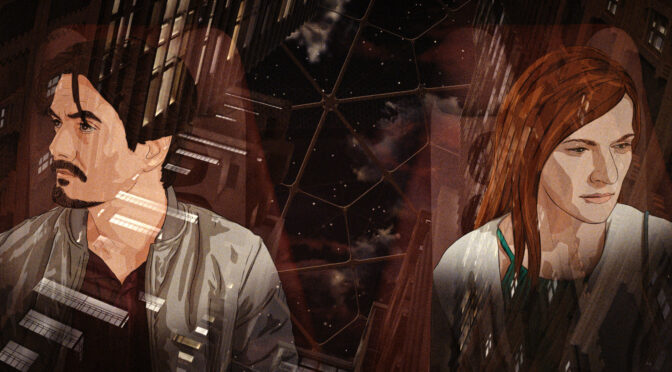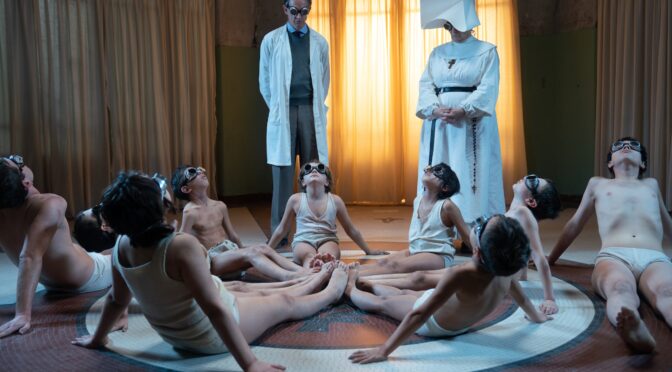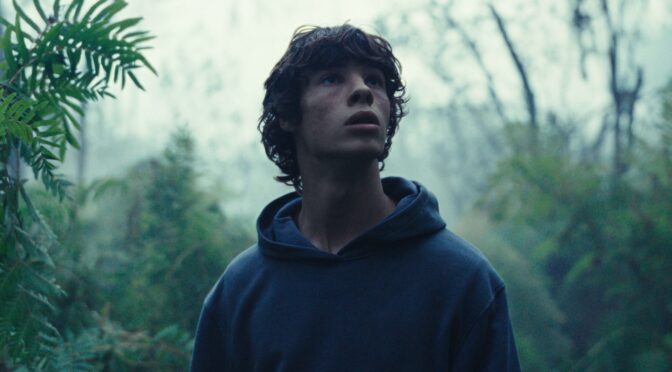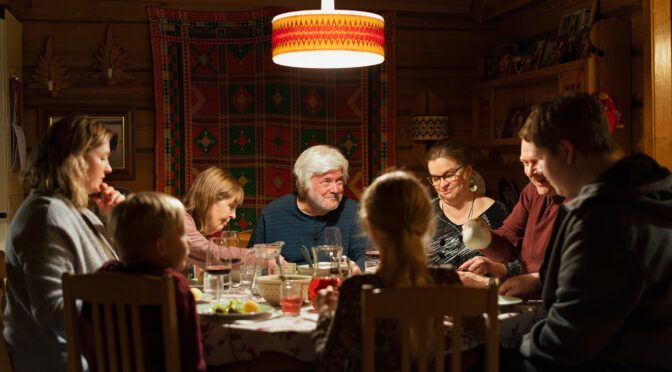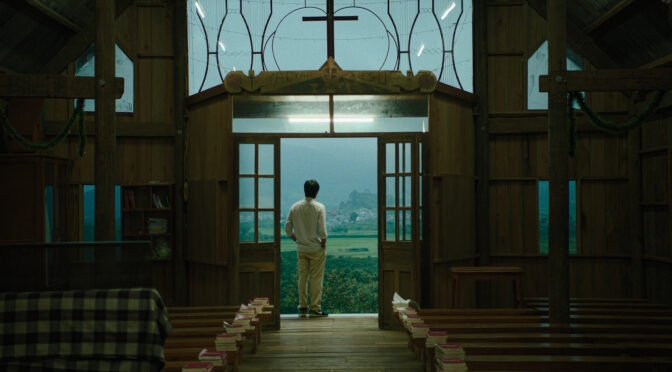I protagonisti dell’ultima commedia di Lucas Santa Ana non possono non ricordare gli amici riuniti attorno al tavolo di Perfetti Sconosciuti. In Luces Azules (Blue Lights), però, la caducità dei rapporti umani e i segreti non distruggono l’identità dei personaggi e la loro fiducia reciproca, bensì diventano occasione di crescita e sostegno.
Continua la lettura di “LUCES AZULES (BLUE LIGHTS)” DI LUCAS SANTA ANA“M DE MÃES” DI LÍVIA PEREZ
Melanie guarda la partita di calcio sdraiata sul letto di schiena mentre si accarezza il pancione che ospita i gemelli Bernardo e Iolanda. Marcela, invece, segue l’incontro con molta più partecipazione e preoccupazione della moglie e, mentre ha gli occhi incollati allo schermo, sfrutta il momento per usare il tiralatte elettrico. Quando la sua squadra segna, l’esultanza è tale che la loro cagna, infastidita, decide di cambiare stanza.
Continua la lettura di “M DE MÃES” DI LÍVIA PEREZ“ARTURO A LOS 30” DI MARTÌN SHANLY
Quanta sofferenza c’è nel “diventare grandi”? Se nel suo primo lungometraggio Juana a los 12 (2014), il regista argentino Martín Shanly aveva esplorato le incertezze di una ragazza che non si sente all’altezza delle aspettative degli adulti, in Arturo a los 30 il protagonista (interpretato dallo stesso Shanly, anche co-sceneggiatore del film) è un adulto che non riesce a sentirsi tale. Arturo incarna il millenial perfetto: sempre sotto farmaci, senza un lavoro stabile e per questo costretto a casa dei genitori, incapace di creare relazioni o di gestire nuove responsabilità. Va avanti così fino a quando, il giorno del matrimonio di un’amica, sarà costretto a confrontarsi con la propria esistenza.
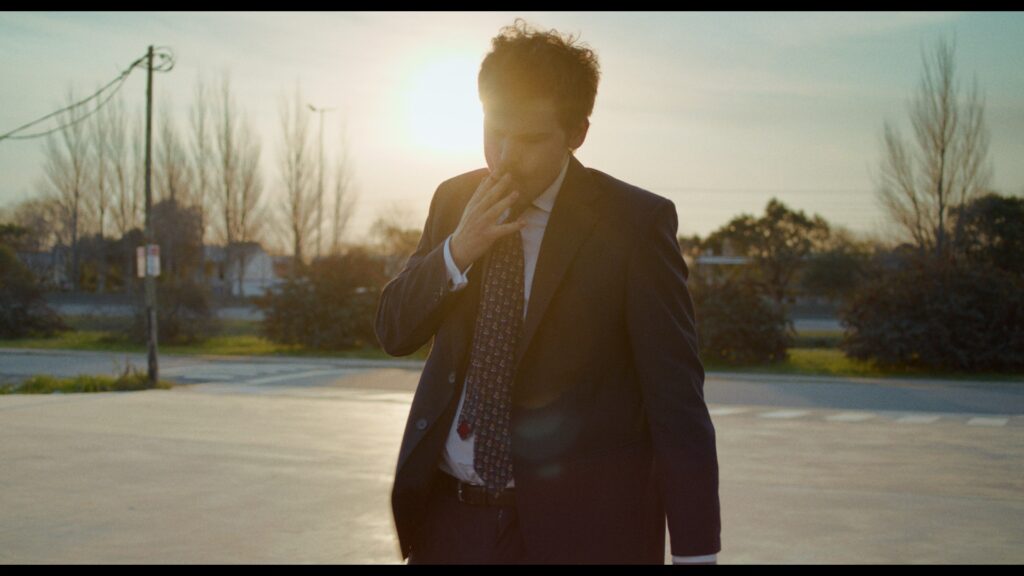
Attraverso la scrittura del suo diario, Arturo si muove avanti e indietro nella storia della sua vita cercando di darle ordine, mescolando passato e presente secondo una logica associativa più che cronologica. Un flashback dopo l’altro iniziamo a comprendere che c’è qualcosa di profondamente irrisolto nel suo percorso di crescita che gli impedisce di varcare la soglia dell’età adulta. Come il pipistrello imprigionato che sbatte contro le vetrate di una chiesa in una delle prime scene del film, Arturo è sospeso in una perenne adolescenza, mentre chi gli sta intorno continua a crescere. È incapace di affrontare i traumi della propria vita, metaforicamente rappresentati dal dito rotto che non si preoccupa di curare. Chiuso nelle proprie insicurezze, è incostante e sfuggente come Julie di The Worst Person in The World (Joachim Trier, 2021), ma porta su di sé anche un’inadeguatezza che ci ricorda Nanni Moretti, da cui eredita la struttura del cinema-diario e la passione per le abbuffate solitarie.
Sarà forse l’inizio della pandemia – quando “non esiste più un modo giusto di vivere la vita” – a permettere ad Arturo di uscire dalla sua immobilità. Tra speranze disattese e traumi rimossi, Martín Shanly riesce a costruire in maniera efficace il ritratto di una generazione grazie a un personaggio che, nella sua goffaggine e tenerezza, sa farci sorridere.
Articolo pubblicato su La Repubblica il 30/11/2023
Sara Longo
“VINCENT DOIT MOURIR” DI STÈPHAN CASTANG
La violenza scaturisce dagli occhi di chi guarda: a Vincent (Karim Leklou), per essere aggredito, basta incrociare lo sguardo di qualcuno. Questa – banale – azione quotidiana è foriera, in Vincent doit mourir, di una crudeltà senza fine, destinata a protrarsi di giorno in giorno, ogni volta con modalità inedite. La violenza si diffonde, in modo quasi epidemico, tramite attacchi scomposti e impacciati di civili totalmente inadatti al combattimento. Si innesca così una follia che ha una venatura grottesca: queste persone vogliono disperatamente uccidere Vincent ma, al tempo stesso, ne sono incapaci.
Continua la lettura di “VINCENT DOIT MOURIR” DI STÈPHAN CASTANG“KUBI” DI KITANO TAKESHI
Dal buio della sala, allo sguardo è concesso di contemplare le sponde di un piccolo fiume immerso nel verde, ma quello che sembra un limpido corso d’acqua è in realtà un ammasso di fanghiglia e cadaveri dilaniati, resti di una battaglia appena conclusa. Con Kubi, Kitano Takeshi torna alla regia con un dramma storico ambientato nel Giappone feudale, esattamente vent’anni dopo il grande successo di Zatōichi (2003), dedicato all’epopea del samurai cieco.
Continua la lettura di “KUBI” DI KITANO TAKESHI“THE COMPLEX FORM” DI FABIO D’ORTA
«A me basta che i soldi siano veri» pronuncia il protagonista, un uomo che, come altri, si è recato in una lussuosa villa ottocentesca per vendere il proprio corpo a entità misteriose in cambio di denaro. Uomini disperati disposti a sottomettersi all’ignoto pur di migliorare la propria condizione. The Complex Form, esordio del regista Fabio D’Orta, inserito nella sezione Crazies del Torino Film Festival 41, ci trascina in un’attesa estenuante che sembra non risolversi mai.
Continua la lettura di “THE COMPLEX FORM” DI FABIO D’ORTA“CHRISTINE – LA MACCHINA INFERNALE” DI JOHN CARPENTER
La 41ª edizione del Tff termina con la proiezione di Christine – La macchina infernale, horror del 1983 con cui Steve Della Casa decide di concludere i suoi due anni di direzione del festival. La scelta non è casuale: il film di John Carpenter fece parte, più di vent’anni fa, di una delle retrospettive dedicate ai cineasti americani poco compresi e un po’ snobbati dalla critica, come George Romero e John Milius. A quarant’anni dall’uscita nelle sale, Della Casa propone una lettura diversa di uno degli horror più riusciti e sottovalutati di Carpenter, tratto da uno dei romanzi più belli e trascurati di Stephen King. Un’opera rimasta in disparte, all’ombra dei film più noti del regista, come La cosa (The Thing, 1982) o Halloween (1978).
Continua la lettura di “CHRISTINE – LA MACCHINA INFERNALE” DI JOHN CARPENTER“LOS DELINCUENTES” DI RODRIGO MORENO
Ambientato nell’Argentina contemporanea, Los delincuentes – nuovo film di Rodrigo Moreno Fuori concorso al Torino Film Festival dopo la presentazione a Cannes nella sezione Un Certain regard – racconta la storia di Morán (Daniel Elías), un impiegato di banca che mette a segno un furto grazie al coinvolgimento del collega Román (Esteban Bigliardi), al quale affida la refurtiva mentre lui si prepara a scontare la propria pena in carcere. Il regista ripensa il genere del film di rapina sostituendo la dinamicità dell’azione, il montaggio rapido, i dialoghi ritmati con lenti movimenti di macchina ed esaltando i tempi morti nelle silenziose inquadrature fisse. Uno sguardo molto personale carico di un’ironia surreale e cupa che presto abbandona il pretesto narrativo del furto per concentrarsi sullo stato d’animo dei due personaggi principali, i cui dubbi e rimorsi emergono in lunghi primi piani, illuminati da una fotografia calda ben più vicino alla commedia che al cosiddetto caper movie.
Ma più ancora che i dubbi e i rimorsi, sono l’euforia e l’adrenalina a conquistare Morán, capace di trovare in quell’atto delinquente la forza per uscire dall’ordinaria prigionia della quotidianità ed entrare invece nella libertà della prigione. L’impiegato scopre infatti in carcere la possibilità di sognare un futuro svincolato da ogni costrizione e imposizione. Per questo, progressivamente, la camera si allontana dal volto dei personaggi e li riposiziona dentro a campi lunghi che li mettono a contatto con una natura incontaminata e lontana dal contesto sociale opprimente e senza prospettive dal quale provengono. Un nuovo orizzonte rappresentato dalla stessa Norma (Margarita Molfino) della quale, tra pascoli e animali, i due si innamorano. Attraverso questa visione volutamente sgrammaticata del genere “rapina”, Rodrigo Moreno con la consueta lucida ironia del Nuovo cinema argentino, inneggia al possibile raggiungimento di una ritrovata libertà che può coincidere solo con l’abbandono di ogni schema preconcetto al quale il mondo contemporaneo sembra averci condannato.
Pietro Torchia
Articolo pubblicato su “La Repubblica” il 27 Novembre 2023
“Folle d’amore: Alda Merini” di Roberto Faenza
Non matta, ma piena di un’incompresa vitalità. Alda Merini, la donna che fece della poesia oggetto di amore e ossessione, tormento e follia, è la protagonista di Folle d’amore: Alda Merini, presentato fuori concorso alla 41° edizione del TFF. Il ritratto della poetessa e della donna dà voce a una figura che, più di tante altre, urla alle nuove generazioni la necessità e l’urgenza di esprimersi, a cui non ha mai rinunciato, nemmeno negli anni del manicomio.
Continua la lettura di “Folle d’amore: Alda Merini” di Roberto Faenza“DO NOT EXPECT TOO MUCH FROM THE END OF THE WORLD” DI RADU JUDE
Tra le molte strade che percorrono il territorio rumeno, una in particolare gode di una certa popolarità: è la Transfăgărășan, anche nota come “la follia di Ceaușescu”, 60 miglia che si snodano attraverso le vette più scoscese della Romania. Il sinistro appellativo con cui viene ricordata, in palese contraddizione rispetto ai panorami mozzafiato che attraversa, risale ai tempi della sua edificazione e vuole essere un ricordo degli operai morti per il completamento del folle progetto. Ma la Transfăgărășan è solo una delle tante. Rispetto alle altre opere di ingegneria civile cadute nel dimenticatoio, ha la fortuna di avere dalla propria la bellezza, e quella si sa, piace a tutti, vende sempre bene.
Continua la lettura di “DO NOT EXPECT TOO MUCH FROM THE END OF THE WORLD” DI RADU JUDE“WHITE PLASTIC SKY” DI TIBOR BÁNÓCZKI E SAROLTA SZABÓ
Il mondo tra cento anni. Nella Budapest del 2123 le persone sono costrette a donare il proprio corpo per il bene comune. La crisi ambientale ha infatti devastato il pianeta, ormai ridotto a una distesa arida su cui non cresce più nulla. Per questo motivo viene progettato un seme che, una volta impiantato, può trasformare l’essere umano in albero. Per la sopravvivenza dell’umanità, chiunque compia cinquant’anni deve subire questo processo.
Continua la lettura di “WHITE PLASTIC SKY” DI TIBOR BÁNÓCZKI E SAROLTA SZABÓ“GIRASOLI” di Catrinel Marlon
Nella sezione “La prima volta” del Torino Film Festival è stato presentato l’esordio alla regia della madrina della manifestazione Catrinel Marlon, attrice ed ex modella di origine romena. Il film, Girasoli, di cui è anche co-sceneggiatrice, nasce da una sua intima necessità, dalla volontà di portare sullo schermo una tematica a lei vicina: la malattia mentale.
Negli anni Sessanta i manicomi esistono ancora: sono luoghi grigi e cupi, le cui pareti trasudano dolore mentale e fisico a causa delle pene corporali, delle “cure” e delle misere condizioni di vita. Sono luoghi in cui si viene rinchiusi e dimenticati per sempre oppure, prima o poi, rigettati nella società. Lucia (Gaia Girace) è una quindicenne schizofrenica, ricoverata da diversi anni presso l’ospedale psichiatrico Santa Teresa di Lisieux, ma non ancora completamente schiacciata dalla vita e dalle terapie. Anna (Mariarosaria Mingione), orfana cresciuta in convento e appena maggiorenne, viene trasferita all’ospedale psichiatrico per diventare infermiera. Una volta giunta nel manicomio deve scegliere da che parte stare: seguire la dottoressa Marie D’amico (Monica Guerritore), donna all’avanguardia nello sperimentare nuove terapie ispirate alle teorie di Franco Basaglia, o conformarsi a quell’ambiente all’epoca prettamente maschile e di vedute ristrette, che crede solo nelle pillole e nell’elettroshock. Dalla scelta di Anna dipenderà il futuro di Lucia e la sua possibilità di salvarsi.

Catrinel Marlon riesce ad affrontare con sguardo autentico una tematica complessa e delicata, ispirata a una storia realmente accaduta. Il racconto è crudo, ma la regista non si sofferma sugli aspetti più degradanti della vita manicomiale, evitando di cadere in una patetica spettacolarizzazione della sofferenza, della reclusione e del dolore. Una narrazione incisiva e puntuale, arricchita da un altro tema centrale di Girasoli: l’amore, il potentissimo mezzo che permette di evadere – anche quotidianamente – da quelle mura soffocanti.
Carlotta Pegollo
articolo pubblicato su “la Repubblica” il 26 novembre 2023
“VANGELO SECONDO MARIA” DI PAOLO ZUCCA
È la storia di una Maria diversa quella raccontata da Paolo Zucca nel suo ultimo film presentato fuori concorso alla 41° edizione del Torino Film Festival, Vangelo secondo Maria, tratto dall’omonimo romanzo di Barbara Alberti.
Continua la lettura di “VANGELO SECONDO MARIA” DI PAOLO ZUCCA“YOU HURT MY FEELINGS” DI NICOLE HOLOFCENER
Fuori concorso, You Hurt My Feelings è l’ultima brillante commedia della regista e sceneggiatrice statunitense Nicole Holofcener che in punta di piedi e con un’ironia calibrata, mette in scena la complessità e la fragilità delle relazioni umane.
Continua la lettura di “YOU HURT MY FEELINGS” DI NICOLE HOLOFCENER“LINDA VEUT DU POULET!” di Chiara Malta e Sébastien Laudenbach
Il Torino Film Festival è tornato per la 41° edizione a illuminare gli schermi delle sale della citta. La scelta di un film d’animazione come apertura del concorso lungometraggi conferma lo spirito innovatore per cui è noto il festival.
Continua la lettura di “LINDA VEUT DU POULET!” di Chiara Malta e Sébastien Laudenbach“LE RÈGNE ANIMAL” DI THOMAS CAILLEY
In un presente alternativo, parte della popolazione è colpita da una mutazione che trasforma le persone in creature ibride, in uomini-animali. Non si conoscono le cause né le ragioni. Si sa solo che le vittime di questa malattia possono mettere a rischio l’ordine e la sicurezza pubblica e che, quindi, devono essere controllate, rinchiuse in riserve appositamente costruite, separate dalla società civile.
Il regista francese Thomas Cailley in Le règne animal, presentato nella sezione Crazies, ci racconta la creazione di un mondo in cui stanno cambiando le frontiere tra ciò che è umano e ciò che è animale. Un cambiamento vissuto dagli intimi punti di vista di un padre (Romain Duris) e di un figlio Émile (Paul Kircher), entrambi affranti per la scomparsa della moglie (e madre), mutata in una di queste creature. Il film mostra l’accettazione di una realtà tanto brutale quanto rappresentativa di un orizzonte in cui l’uomo è chiamato a stabilire un rapporto di convivenza pacifica con gli altri esseri viventi.
Le règne animal è anche il racconto della crescita di Émile e del suo assecondare un destino di trasformazione – un coming of age atipico, accompagnato dai picareschi brani del musicista torinese Andrea Laszlo De Simone. Émile corre tra gli alberi della foresta in cui trascorre le giornate, caccia, nuota nella palude, e urla a pieni polmoni quel grido di libertà che è espressione della natura stessa che cerca di sopravvivere alla dominazione dell’uomo. Il ragazzo ribalta l’immagine che la cosiddetta società civilizzata crea attorno alle creature ibride, facendosi esempio di come la metamorfosi in animale non sia brutalizzazione di sé, ma liberazione dalle leggi distruttive del sistema. Così, Émile, accettando se stesso come parte del règne animal, riflette e comunica nuove prospettive sull’emergenza ecologica. Nuovi modi – resistenti alle dinamiche di potere e di controllo sulla natura – di re-immaginare il rapporto con l’ecosistema.
Federico Lionetti
Articolo pubblicato su “la Repubblica” il 3 dicembre 2023
“MUMMOLA” DI TIA KOUVO
Il termine “mummola” in finlandese si riferisce alla casa della nonna, ma non si limita a indicare il mero luogo fisico. “Mummola” è la meta delle vacanze natalizie per tutta la famiglia, è un insieme di odori e sapori, un luogo sicuro e accogliente il cui ricordo provoca sempre una gradevole nostalgia, anche quando la famiglia non è proprio perfetta e unita. I ricordi della regista Tia Kouvo – che sceglie la sua città natale come location – prendono vita nel suo film d’esordio, sviluppato con il supporto del TorinoFilmLab e presentato alla 41° edizione del Torino Film Festival.
Continua la lettura di “MUMMOLA” DI TIA KOUVO“NOTRE CORPS” DI CLAIRE SIMON
All’inizio c’è un’ombra: è quella di Claire Simon, la regista di Notre corps, presentato nel Concorso documentari internazionali al 41° Torino Film Festival. Riprende il contorno di se stessa e della macchina da presa che si delinea sulla strada prima di entrare – come dice la sua voce – nel racconto di «un valzer folle di destini, dall’inizio alla fine». Torna alla mente la scena in cui un’altra grande regista francese, Agnès Varda, che inquadra le sue mani mentre commenta come il corpo cambi nel tempo in La vita è un raccolto (2000). In entrambi i casi non c’è programmaticità nello sguardo della macchina quanto piuttosto il punto di vista soggettivo e personale di due donne che trasformano ogni inquadratura in un’umana riflessione sulla vita e sul suo essere determinata dalla fine.
Simon inizia da un incontro, quello con la produttrice Kristina Larsen che le dà lo spunto per un documentario. Eccola quindi entrare nel reparto di ginecologia di un ospedale pubblico parigino per raccontare, guardando al cinema di Frederick Wiseman, un microcosmo composito nel quale ogni tassello è una patologia diversa. Le singole esperienze private sono allineate nella narrazione in modo da rivendicarne anche la dimensione pubblica. Lo mostrano due scene che si susseguono: prima alcune manifestanti denunciano la brutalità delle visite mediche che hanno dovuto subire e rivendicano il diritto di scelta sul proprio corpo. Subito dopo, di nuovo dentro l’ospedale, una signora guarda in macchina mentre la preparano per un’operazione sottolineando il suo amore per il cinema e quanto il lavoro della regista sia importante perché bisogna prima di tutto informare. Ed è Claire Simon stessa a testimoniarlo: quando scopre di avere il cancro durante le riprese dice infatti al suo medico che l’avrebbe presa molto peggio se non fosse stata nel pieno della realizzazione di questo film, che proprio sul ruolo del corpo come attore dell’esistenza riflette.
Valentina Testa.
“A STRANGER QUEST” DI ANDREA GATOPOULOS
Tracciare i confini di una mappa significa indagare il mondo conosciuto e, soprattutto, rivolgere il nostro sguardo verso l’ignoto. Ruotano intorno a questo le domande che Andrea Gatopoulos lascia che l’intelligenza artificiale ponga a David Rumsey, uno dei più grandi collezionisti di mappe del mondo. Il primo lungometraggio del regista abruzzese conclude una trilogia dedicata al rapporto tra uomo e macchina costituita dai due cortometraggi Happy New Year, Jim (2022) ed Eschaton Ad (2023).
Continua la lettura di “A STRANGER QUEST” DI ANDREA GATOPOULOS“INSIDE THE YELLOW COCOON SHELL” DI THIEN AN PHAM
A Saigon, in un bar affollato per i mondiali di calcio di Russia 2018, tre ragazzi discutono sull’esistenza di Dio. Uno è ateo, un altro è convinto di poter trovare una sua testimonianza avvicinandosi alla natura e il terzo, Thien (Le Phong Vu), non riesce a trovare la fede nonostante lo desideri. Questa e tantissime altre “invocazioni” stabiliscono il vero obiettivo del viaggio che inizierà di lì a poco: il tentativo di trovare anche una piccolissima traccia immanente della grandezza del divino. Ciò che stupisce – ed è bene dirlo subito – è l’intuizione di Thien An Pham, qui al suo esordio, di non limitarsi ad assecondare l’indagine del suo protagonista ma di arricchire questo dialogo teologico con la sua personale osservazione effettuata tramite il mezzo cinematografico.
Continua la lettura di “INSIDE THE YELLOW COCOON SHELL” DI THIEN AN PHAM
